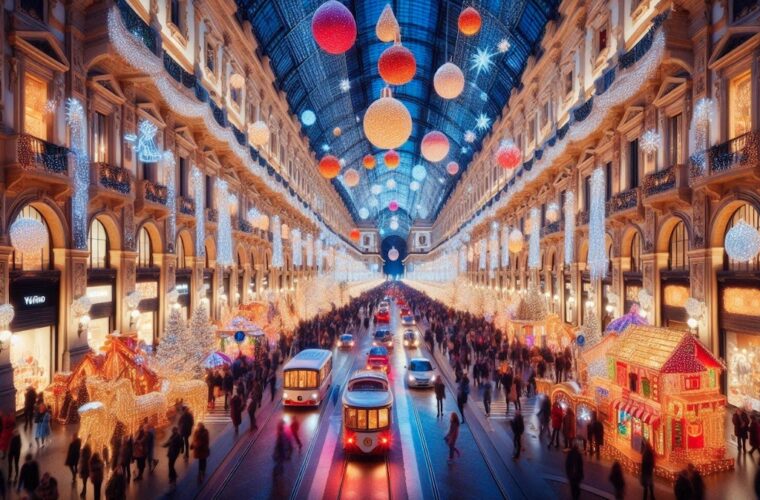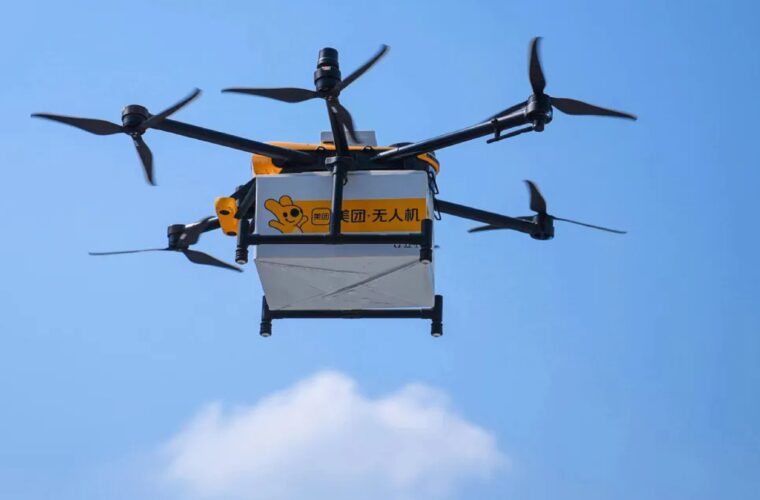While Barcelona may not offer the snow-covered idyllic Christmases often portrayed in Hollywood films, the Catalan capital boasts a wealth of magical and unique holiday experiences. Leave the snow behind this festive season and immerse yourself in Barcelona’s Christmas markets, local traditions like Caga Tió, and dazzling light displays throughout the city.
Unlike Central and Northern Europe, where warm spiced wines like Glühwein are a seasonal staple, locals in Barcelona favour “chocolate caliente con churros” (churros with thick, warm chocolate) or stick to cold beverages, which remain popular year-round.
Mercat de Fira de Santa Llucia
One of the oldest Christmas markets in Europe, dating back to 1786, the Fira de Santa Llucia is located along Avinguda de la Catedral, right next to the iconic Cathedral of Barcelona. Until December 23, this market offers a wide array of stalls selling nativity figures and festive decorations, including the “Caganer” and “Caga Tió”.
The Caganer, meaning “the pooper” in Catalan, is a quirky figure often included in nativity scenes. Traditionally depicted as a peasant in a red cap (barretina in Catalan) with his pants down. While old-fashioned nativity scene builders use a traditional caganer, there are many modern versions, such as celebrities (think the Beatles or Messi) and even fictional characters like Batman or Doctor Strange.
The Caga Tió (literally “pooping log”) is another beloved Catalan Christmas figure. This cheerful log wears a barretina and a blanket, with a painted face and smile. Children sing the traditional song while handling a wood stick:
“Caga Tió, almonds and nougat, if you don’t poop well, I’ll give you a stick hit. Poop, Tió!”
After singing, children uncover the blanket to find sweets or small gifts that have “magically appeared”.
Other Christmas markets in Barcelona
Beyond the Fira de Santa Llucia, Barcelona hosts several other festive markets. The Fira de Nadal de la Sagrada Familia, also open until December 23, offers a range of Christmas trees, nativity figures, and even artisanal products like jewellery and clothing. Of course, you can also find Caga Tió and Caganer figures there.
A newer addition to Barcelona’s Christmas scene is the Fira del Port Vell near the Christopher Columbus statue. Open until January 6, this market features the city’s tallest Christmas tree, a Ferris wheel, and a host of festive stalls.
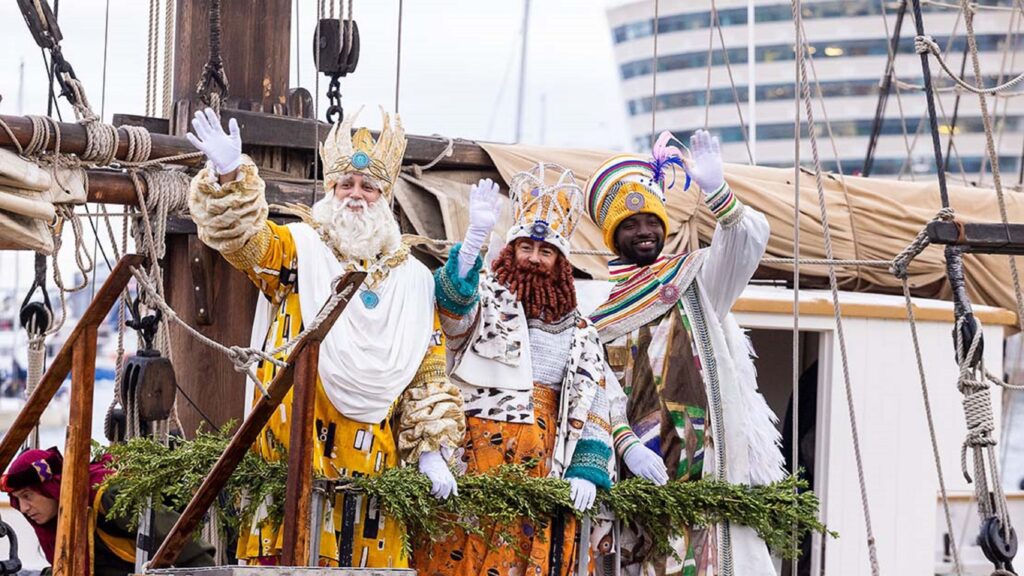
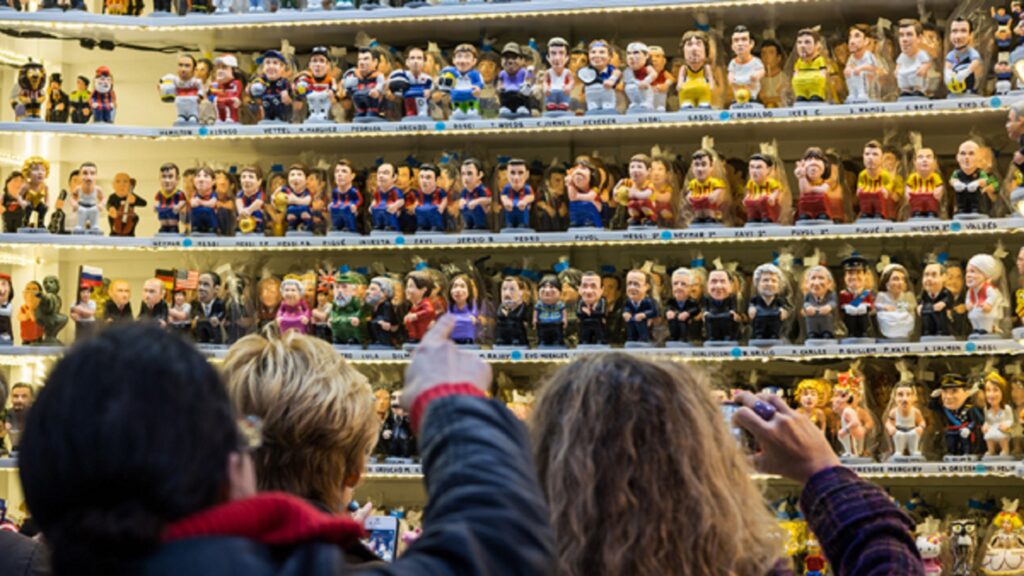
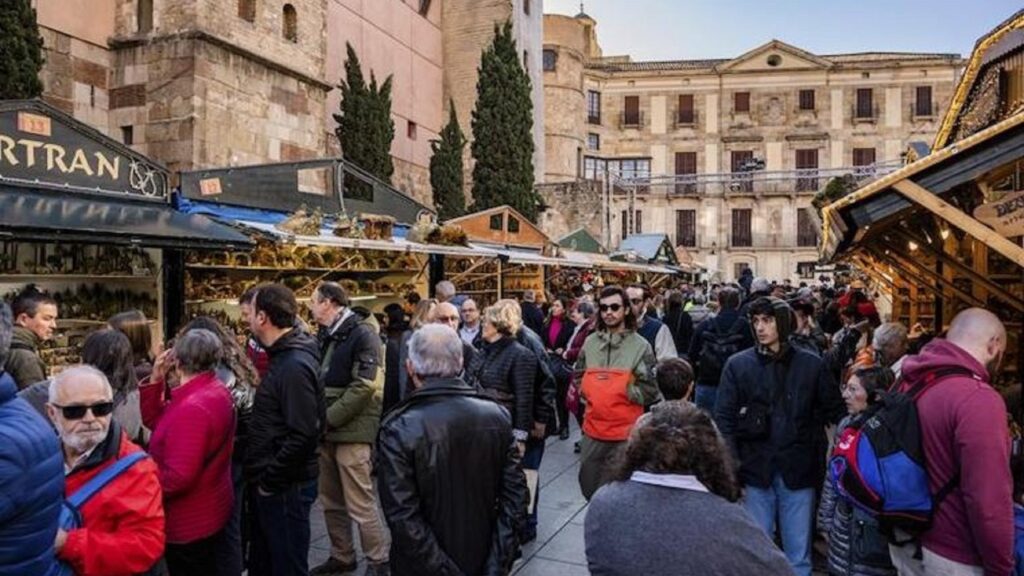
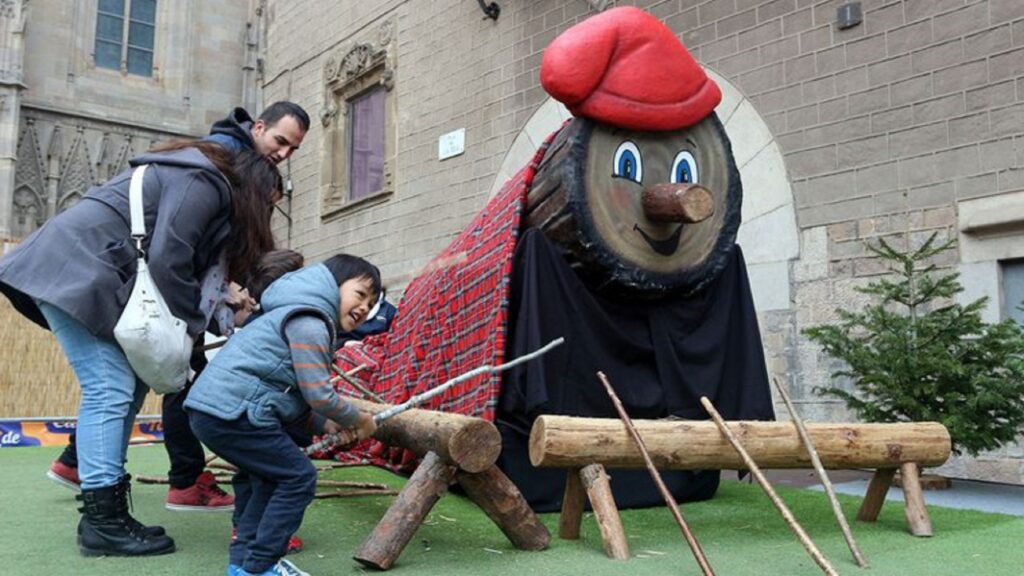
Three Wise Men Parade
For a more traditional holiday spectacle, don’t miss the Three Kings Parade on January 5. Known as the “Cabalgata de Reyes Magos”, this annual event sees the three Wise Men arrive at Port Vell aboard a spectacular galleon. The Kings will collect letters from children, both good and bad, before throwing sweets to the crowd as they parade through the city. The parade begins at 6 PM on Marquès de l’Argentera Street and concludes at 9:15 PM at Avinguda Reina Maria Cristina. Each float, or “carroza,” features various artists to entertain both children and adults.
Christmas Lights
Barcelona’s Christmas lights, which were switched on November 28, will shine through January 5. One of the most magical experiences is walking through the illuminated gardens of the Hospital de Sant Pau, a modernist architectural gem. This year’s display includes stalls and an ice rink for even more festive fun.
For another unique ice-skating experience, head to Tibidabo Park. According to the company that organises the experience, the park boasts a small ice rink with stunning views from the mountain. The rink is made from sustainable materials designed to replicate the feel of real ice. Additionally, the official tourist board offers a 1 hour and 20-minute guided tour of the city’s Christmas lights, priced at €15 for adults and €10 for children.

